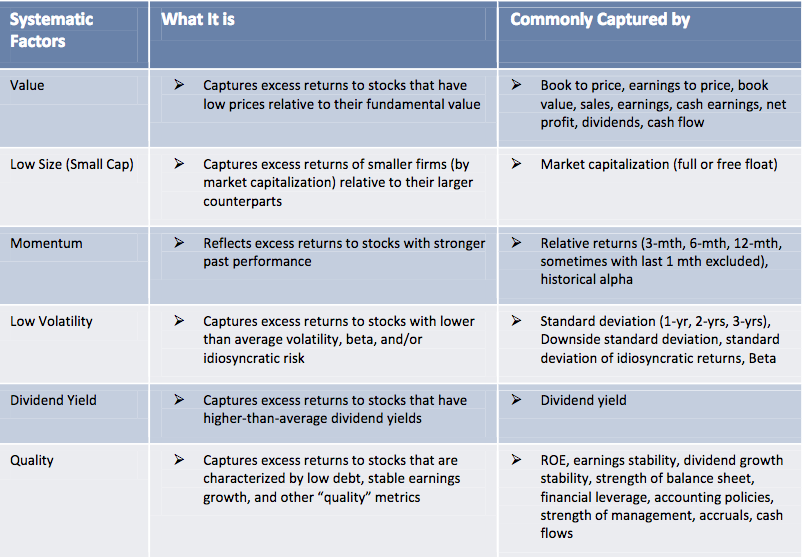Portfolio diversification is one of the most basic maxims in investing. Even a novice can grasp the wisdom of not placing all of your eggs in the same basket.
Yet, is your portfolio really diversified as it needs to be? If you are following traditional diversification strategies, it may not be.
Simply adopting a 60%-40% mix between stocks and bonds or investing in ETF products whose components are blindly ranked by market value may not be enough.

Smart Beta
Academic research by MSCI and other investment firms suggests that “factor investing” may offer enhanced long-term portfolio returns with possibly less risk.
Smart beta ETFs are carefully constructed indexes that rank stocks by traits (or factors) other than their market value, the standard methodology employed by traditional benchmarks, such as the Standard & Poor’s 500.
Some argue that the traditional approach of simply weighting companies solely according to their market value is a recipe for sub-optimal returns.
In other words, there’s a risk of overweighting overvalued stocks and underweighting undervalued ones.
Real diversification
Instead, smart beta products focus on factors, such as value, momentum, dividend yields, volatility or other key financial metrics that have historically delivered market-beating performance and reduced portfolio risk.

A portfolio armed with index funds diversified across multiple factors have historically performed well, according to a research paper by MSCI.
Low Fees
Smart beta strategies may be attractive to investors seeking greater factor diversification and investment calibration compared to traditional passive investment products, but without the higher fees that come with an actively-managed fund.
That said, it’s important to point out that smart beta products are rebalanced on a regular basis to better meet the investing goals set by the portfolio manager.
Higher Turnover
The relatively higher turnover does have associated commissions and tax implications that need to be considered.
Some factor-driven products are pretty straightforward, but others are based on complex methodologies.
Read the prospectus, check out the provider’s website and consult an investment professional, if need be, to make sure you’re adequately informed before diving in.
Photo Credit: Pictures of Money via Flickr Creative Commons

